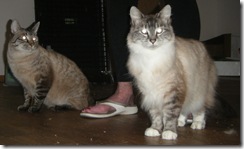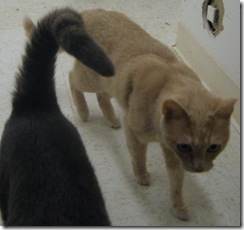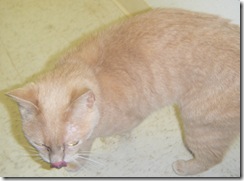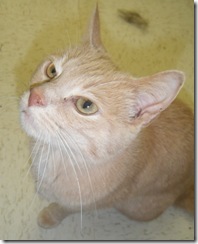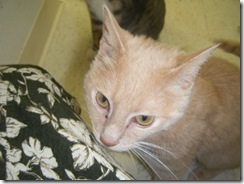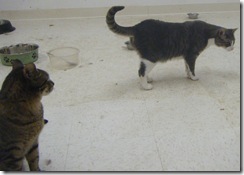Narcissism is the pursuit of gratification from vanity, or egotistic admiration of one’s own physical or mental attributes, that derive from arrogant pride. The term originated withNarcissus in Greek mythology who fell in love with his own image reflected in a pool of water.
Narcissism is a concept in psychoanalytic theory, introduced in Sigmund Freud‘s On Narcissism. The American Psychiatric Association has the classification Narcissistic personality disorder in its Diagnostic and Statistical Manual of Mental Disorders (DSM).
Narcissism is also considered a social or cultural problem. It is a factor in trait theory used in some self-report inventories of personality such as the Millon Clinical Multiaxial Inventory
Except in the sense of primary narcissism or healthy self-love, narcissism is usually considered a problem in a person or group’s relationships with self and others. Narcissism is not the same as egocentrism.
History
The term narcissism comes from the Greek myth of Narcissus, a handsome Greek youth who rejected the desperate advances of the nymph Echo. These advances eventually led Narcissus to fall in love with his own reflection in a pool of water. Unable to consummate his love, Narcissus “lay gazing enraptured into the pool, hour after hour,” and finally changed into a flower that bears his name, the narcissus.[1]
The concept of excessive selfishness has been recognized throughout history. In ancient Greece the concept was understood as hubris. It is only in recent times that it has been defined in psychological terms.
- In 1752 Jean-Jacques Rousseau’s play Narcissus: or the Self-Admirer was performed in Paris.
- In 1898 Havelock Ellis, an English sexologist, used the term “narcissus-like” in reference to excessive masturbation, whereby the person becomes his or her own sex object.[2]
- In 1899, Paul Näcke was the first person to use the term “narcissism” in a study of sexual perversions.
- Otto Rank in 1911 published the first psychoanalytical paper specifically concerned with narcissism, linking it to vanity and self-admiration.[2]
- Sigmund Freud published a paper exclusively devoted to narcissism in 1914 called On Narcissism: An Introduction.[3]
- In 1923, Martin Buber published an essay “Ich und Du” (I and You), in which he pointed out that our narcissism often leads us to relate to others as objects instead of as equals.
- Since 2000, on psychological tests designed to detect narcissism, the scores of residents of the United States have continually increased. Psychologists have suggested a link to social networking.[4]
Traits and signs
Life is a stage, and when the curtain falls upon an act, it is finished and forgotten. The emptiness of such a life is beyond imagination.[5]
“
”
Four dimensions of narcissism as a personality variable have been delineated: leadership/authority, superiority/arrogance, self-absorption/self-admiration, and exploitativeness/entitlement.[6]
A 2012 popular book on power-hungry narcissists suggests that narcissists typically display most, and sometimes all, of the following traits:[7]
Hotchkiss’ seven deadly sins of narcissism
Hotchkiss identified what she called the seven deadly sins of narcissism:[8]
- Shamelessness: Shame is the feeling that lurks beneath all unhealthy narcissism, and the inability to process shame in healthy ways.
- Magical thinking: Narcissists see themselves as perfect, using distortion and illusion known as magical thinking. They also use projection to dump shame onto others.
- Arrogance: A narcissist who is feeling deflated may reinflate by diminishing, debasing, or degrading somebody else.
- Envy: A narcissist may secure a sense of superiority in the face of another person’s ability by using contempt to minimize the other person.
- Entitlement: Narcissists hold unreasonable expectations of particularly favorable treatment and automatic compliance because they consider themselves special. Failure to comply is considered an attack on their superiority, and the perpetrator is considered an “awkward” or “difficult” person. Defiance of their will is a narcissistic injury that can trigger narcissistic rage.
- Exploitation: Can take many forms but always involves the exploitation of others without regard for their feelings or interests. Often the other is in a subservient position where resistance would be difficult or even impossible. Sometimes the subservience is not so much real as assumed.
- Bad boundaries: Narcissists do not recognize that they have boundaries and that others are separate and are not extensions of themselves. Others either exist to meet their needs or may as well not exist at all. Those who provide narcissistic supply to the narcissist are treated as if they are part of the narcissist and are expected to live up to those expectations. In the mind of a narcissist there is no boundary between self and other.
Clinical and research aspects
Narcissistic personality disorder
Narcissistic personality disorder affects 1% of the population.[2][9]
Although most individuals have some narcissistic traits, high levels of narcissism can manifest themselves in a pathological form as narcissistic personality disorder (NPD), whereby the patient overestimates his or her abilities and has an excessive need for admiration and affirmation. A revision of NPD took place in the DSM V. In this revision, NPD saw dramatic changes to its definition. The general move towards a dimensional (personality trait-based) view of the Personality Disorders has been maintained.
-Some may have a limited or minimal capability of experiencing emotions.[10]
Healthy narcissism
Healthy narcissism is a structural truthfulness of the self, achievement of self and object constancy, synchronization between the self and the superego and a balance between libidinal and aggressive drives (the ability to receive gratification from others and the drive for impulse expression). Healthy narcissism forms a constant, realistic self-interest and mature goals and principles and an ability to form deep object relations.[11] A feature related to healthy narcissism is the feeling of greatness. This is the antithesis of insecurity or inadequacy.
A required element within normal development
Healthy narcissism might exist in all individuals. Freud says that this is an original state from which the individual develops the love object. He argues that healthy narcissism is an essential part of normal development.[3] According to Freud the love of the parents for their child and their attitude toward their child could be seen as a revival and reproduction of their own narcissism.[3] The child has an omnipotence of thought; the parents stimulate that feeling because in their child they see the things that they have never reached themselves. Compared to neutral observations, the parents tend to overvalue the qualities of their child. When parents act in an extreme opposite style and the child is rejected or inconsistently reinforced depending on the mood of the parent, the self-needs of the child are not met.[citation needed]
Karen Horney saw the narcissistic personality as the product of a certain kind of early environment molding a certain kind of temperament. She did not see narcissistic needs and tendencies as inherent in human nature.[12]
In relation to the pathological condition
Healthy narcissism has to do with a strong feeling of “own love” protecting the human being against illness. Eventually, however, the individual must love the other, “the object love to not become ill.” The individual becomes ill as a result of the frustration created when he is unable to love the object.[13] In pathological narcissism such as the narcissistic personality disorder, the person’s libido has been withdrawn from objects in the world and produces megalomania. The clinical theorists Kernberg, Kohut and Millon all see pathological narcissism as a possible outcome in response to unempathic and inconsistent early childhood interactions. They suggested that narcissists try to compensate in adult relationships.[14] The pathological condition of narcissism is, as Freud suggested, a magnified, extreme manifestation of healthy narcissism.
With regard to the condition of healthy narcissism, it is suggested that this is correlated with good psychological health. Self-esteem works as a mediator between narcissism and psychological health. Therefore, because of their elevated self-esteem, deriving from self-perceptions of competence and likability, high narcissists are relatively free of worry and gloom.[15] Other researchers suggested that healthy narcissism cannot be seen as ‘good’ or ‘bad’; however, it depends on the contexts and outcomes being measured. In certain social contexts such as initiating social relationships, and with certain outcome variables, such as feeling good about oneself, healthy narcissism can be helpful. In other contexts, such as maintaining long-term relationships and with other outcome variables, such as accurate self-knowledge, healthy narcissism can be unhelpful.[16]
Commonly used measures
Narcissistic Personality Inventory
The Narcissistic Personality Inventory (NPI) is the most widely used measure of narcissism in social psychological research. Although several versions of the NPI have been proposed in the literature, a forty-item forced-choice version (Raskin & Terry, 1988) is the one most commonly employed in current research. The NPI is based on the DSM-III clinical criteria for narcissistic personality disorder (NPD), although it was designed to measure these features in the general population. Thus, the NPI is often said to measure “normal” or “subclinical” (borderline) narcissism (i.e., in people who score very high on the NPI do not necessarily meet criteria for diagnosis with NPD).
The Millon Clinical Multiaxial Inventory
The Millon Clinical Multiaxial Inventory (MCMI) is a widely used diagnostic test developed by Theodore Millon. The MCMI includes a scale for Narcissism. Auerbach compared the NPI and MCMI and found them well correlated, r(146) = .55, p<.001.[17] It should be noted that whereas the MCMI measures narcissistic personality disorder (NPD), the NPI measures narcissism as it occurs in the general population. In other words, the NPI measures “normal” narcissism; i.e., most people who score very high on the NPI do not have NPD. Indeed, the NPI does not capture any sort of narcissism taxon as would be expected if it measured NPD.[18]
Empirical studies
Within psychology, there are two main branches of research into narcissism, clinical and social psychology. These approaches differ in their view of narcissism with the former treating it as a disorder, thus as discrete, and the latter treating it as a personality trait, thus as a continuum. These two strands of research tend loosely to stand in a divergent relation to one another, although they converge in places.
Campbell and Foster (2007)[19] review the literature on narcissism. They argue that narcissists possess the following “basic ingredients”:
- Positive: Narcissists think they are better than others.[20]
- Inflated: Narcissists’ views tend to be contrary to reality. In measures that compare self-report to objective measures, narcissists’ self-views tend to be greatly exaggerated.[21]
- Agentic: Narcissists’ views tend to be most exaggerated in the agentic domain, relative to the communion domain.[20][21]
- Special: Narcissists perceive themselves to be unique and special people.[22]
- Selfish: Research upon narcissists’ behaviour in resource dilemmas supports the case for narcissists as being selfish.[23]
- Oriented toward success: Narcissists are oriented towards success by being, for example, approach oriented.[24]
Narcissists tend to demonstrate a lack of interest in warm and caring interpersonal relationships. [Campbell and Forster (2007)[19]]. There are several ongoing controversies within narcissism literature, namely whether narcissism is healthy or unhealthy, a personality disorder, a discrete or continuous variable, defensive or offensive, the same across genders, the same across cultures, and changeable or unchangeable.
Campbell and Foster (2007) argue that self-regulatory strategies are of paramount importance to understanding narcissism.[19] Self-regulation in narcissists involves such things as striving to make one’s self look and feel positive, special, successful and important. It comes in both intra-psychic, such as blaming a situation rather than self for failure, and interpersonal forms, such as using a relationship to serve one’s own self. Some differences in self-regulation between narcissists and non-narcissists can be seen with Campbell, Reeder, Sedikides & Elliot (2000)[25] who conducted a study with two experiments. In each experiment, participants took part in an achievement task, following which they were provided with false feedback; it was either bogus success or failure. The study found that both narcissists and non-narcissists self-enhanced, but non-narcissists showed more flexibility in doing so. Participants were measured on both a comparative and a non-comparative self-enhancement strategy. Both narcissists and non-narcissists employed the non-comparative strategy similarly; however, narcissists were found to be more self-serving with the comparative strategy, employing it far more than non-narcissists, suggesting a greater rigidity in their self-enhancement. When narcissists receive negative feedback that threatens the self, they self-enhance at all costs, but non-narcissists tend to have limits.
Heritability of narcissism utilizing twin studies
Livesley et al. concluded, in agreement with other studies, that narcissism as measured by a standardized test was a common inherited trait.[26] Additionally, in similar agreement with those other studies, it was found that there exists a continuum between normal and disordered personality.
The study subjects were 175 volunteer twin pairs (ninety identical, eighty-five fraternal) drawn from the general population. Each twin completed a questionnaire that assessed eighteen dimensions of personality disorder. The authors estimated the heritability of each dimension of personality by standard methods, thus providing estimates of the relative contributions of genetic and environmental causation.
Of the eighteen personality dimensions, narcissism was found to have the highest heritability (0.64), indicating that the concordance of this trait in the identical twins was significantly influenced by genetics. Of the other dimensions of personality, only four were found to have heritability coefficients of greater than 0.5: callousness, identity problems, oppositionality and social avoidance.
Stigmatising attitude of narcissists to psychiatric illness
Arikan found that a stigmatising attitude to psychiatric patients is associated with narcissistic personality traits.[27]
Narcissism in evolutionary psychology
The concept of narcissism is used in evolutionary psychology in relation to the mechanisms of assortative mating, or the non-random choice of a partner for purposes of procreation.
Evidence for assortative mating among humans is well established; humans mate assortatively regarding age, IQ, height, weight, nationality, educational and occupational level, physical and personality characteristics, and family relatedness.[28] In the “self seeking like” hypothesis, individuals unconsciously look for a mirror image of themselves in others, seeking criteria of beauty or reproductive fitness in the context of self-reference.
Alvarez et al. found that facial resemblance between couples was a strong driving force among the mechanisms of assortative mating: human couples resemble each other significantly more than would be expected from random pair formation.[29] Since facial characteristics are known to be inherited, the “self seeking like” mechanism may enhance reproduction between genetically similar mates, favoring the stabilization of genes supporting social behavior, with no kin relationship among them.
Workplace
Narcissism as a personality trait, generally assessed with the Narcissistic Personality Inventory, is related to behavior in the workplace. For example, individuals high on narcissism are more likely to engage incounterproductive work behavior (behavior that harms organizations or other people in the workplace).[30] Although individuals high on narcissism might engage in more aggressive (and counterproductive) behaviors, they mainly do so when their self-esteem is threatened.[31] Thus narcissistic employees are more likely to engage in CWB when they feel threatened.[32] Given their fragile self-esteem, employees who are high on narcissism are likely to perceive more workplace abuse and sexual harassment from others than do individuals who are low on narcissism.[33]
Types
Masterson’s subtypes (exhibitionist and closet)
In 1993, James F. Masterson proposed two categories for pathological narcissism, exhibitionist and closet.[34] Both fail to adequately develop an age- and phase- appropriate self because of defects in the quality of psychological nurturing provided, usually by the mother. The exhibitionist narcissist is the one described in DSM-IV and differs from the closet narcissist in several important ways.
The closet narcissist is more likely to be described as having a deflated, inadequate self-perception and greater awareness of emptiness within. The exhibitionist narcissist would be described as having an inflated, grandiose self-perception with little or no conscious awareness of the emptiness within. Such a person would assume that this condition was normal and that others were just like them.
The closet narcissist seeks constant approval from others and appears similar to the borderline in the need to please others. The exhibitionist narcissist seeks perfect admiration all the time from others.
Millon’s variations
Theodore Millon identified five variations of narcissist.[2] Any individual narcissist may exhibit none or one of the following:
- unprincipled narcissist: including antisocial features. A charlatan—is a fraudulent, exploitative, deceptive and unscrupulous individual.
- amorous narcissist: including histrionic features. The Don Juan or Casanova of our times—is erotic, exhibitionist.
- compensatory narcissist: including negativistic (passive-aggressive), avoidant features.
- elitist narcissist: variant of pure pattern. Corresponds to Wilhelm Reich‘s “phallic narcissistic” personality type.
- fanatic type: including paranoid features. An individual whose self-esteem was severely arrested during childhood, usually with major paranoid tendencies, who holds onto an illusion of omnipotence. These people are fighting delusions of insignificance and lost value and are trying to re-establish their self-esteem through grandiose fantasies and self-reinforcement. If unable to gain recognition or support from others, they take on the role of a heroic or worshipped person with a grandiose mission.
Other forms of narcissism
Acquired situational narcissism
Acquired situational narcissism (ASN) is a form of narcissism that develops in late adolescence or adulthood, brought on by wealth, fame and the other trappings of celebrity. It was coined by Robert B. Millman, professor of psychiatry at the Weill Cornell Medical College of Cornell University.
ASN differs from conventional narcissism in that it develops after childhood and is triggered and supported by the celebrity-obsessed society. Fans, assistants and tabloid media all play into the idea that the person really is vastly more important than other people, triggering a narcissistic problem that might have been only a tendency, or latent, and helping it to become a full-blown personality disorder. “Millman says that what happens to celebrities is that they get so used to people looking at them that they stop looking back at other people.”[35]
In its presentation and symptoms, it is indistinguishable from narcissistic personality disorder, differing only in its late onset and its support by large numbers of others. “The lack of social norms, controls, and of people telling them how life really is, also makes these people believe they’re invulnerable,”[36] so that the person with ASN may suffer from unstable relationships, substance abuse and erratic behaviour.
A famous fictional character with ASN is Norma Desmond, the main character of Sunset Boulevard.
Aggressive narcissism
This is Factor 1 in the Hare Psychopathy Checklist,[citation needed] which includes the following traits:
Codependency (inverted narcissism or co-narcissism)
Main article:
CodependencyCodependency is a tendency to behave in overly passive or excessively caretaking ways that negatively impact one’s relationships and quality of life. Narcissists are considered to be natural magnets for the codependent. Rappoport identifies codependents of narcissists as “co-narcissists”.[37]
Collective or group narcissism
Collective narcissism (or group narcissism) is a type of narcissism where an individual has an inflated self-love of his or her own ingroup, where an “ingroup” is a group in which an individual is personally involved.[38]While the classic definition of narcissism focuses on the individual, collective narcissism asserts that one can have a similar excessively high opinion of a group, and that a group can function as a narcissistic entity.[38] Collective narcissism is related to ethnocentrism; however, ethnocentrism primarily focuses on self-centeredness at an ethnic or cultural level, while collective narcissism is extended to any type of ingroup beyond just cultures and ethnicities.[38][39]
Conversational narcissism
Conversational narcissism is a term used by sociologist Charles Derber in his book, The Pursuit of Attention: Power and Ego in Everyday Life.
Derber observed that the social support system in America is relatively weak, and this leads people to compete mightily for attention. In social situations, they tend to steer the conversation away from others and toward themselves. “Conversational narcissism is the key manifestation of the dominant attention-getting psychology in America,” he wrote. “It occurs in informal conversations among friends, family and coworkers. The profusion of popular literature about listening and the etiquette of managing those who talk constantly about themselves suggests its pervasiveness in everyday life.”
What Derber describes as “conversational narcissism” often occurs subtly rather than overtly because it is prudent to avoid being judged an egotist.
Derber distinguishes the “shift-response” from the “support-response”.
Corporate narcissism
Organizational psychologist Alan Downs wrote a book in 1997 describing corporate narcissism.[40] He explores high-profile corporate leaders (such as Al Dunlap and Robert Allen) who, he suggests, literally have only one thing on their minds: profits. According to Downs, such narrow focus actually may yield positive short-term benefits, but ultimately it drags down individual employees as well as entire companies. Alternative thinking is proposed, and some firms now utilizing these options are examined. Downs’ theories are relevant to those suggested by Victor Hill in his book, Corporate Narcissism in Accounting Firms Australia.[41]
Cultural narcissism
In The Culture of Narcissism, Christopher Lasch defines a narcissistic culture as one where every activity and relationship is defined by the hedonistic need to acquire the symbols of wealth,[42] this becoming the only expression of rigid, yet covert, social hierarchies. It is a culture where liberalism only exists insofar as it serves a consumer society, and even art, sex and religion lose their liberating power.
In such a society of constant competition, there can be no allies, and little transparency. The threats to acquisitions of social symbols are so numerous, varied and frequently incomprehensible, that defensiveness, as well as competitiveness, becomes a way of life. Any real sense of community is undermined—or even destroyed—to be replaced by virtual equivalents that strive, unsuccessfully, to synthesize a sense of community.
Destructive narcissism
Destructive narcissism is the constant exhibition of numerous and intense characteristics usually associated with the pathological narcissist but having fewer characteristics than pathological narcissism.[43]
Malignant narcissism
Malignant narcissism, a term first coined in a book by Erich Fromm in 1964,[44] is a syndrome consisting of a cross breed of the narcissistic personality disorder, the antisocial personality disorder, as well as paranoidtraits. The malignant narcissist differs from one suffering from narcissistic personality disorder in that the malignant narcissist derives higher levels of psychological gratification from accomplishments over time (thus worsening the disorder). Because the malignant narcissist becomes more involved in this psychological gratification, in the context of the right conditions, the narcissist is apt to develop the antisocial, the paranoid, and the schizoid personality disorders. The term malignant is added to the term narcissist to indicate that individuals with this disorder have a powerful form of narcissism that has made them ill in the forms of paranoid and anti-social traits.
Medical narcissism
Medical narcissism is a term coined by John Banja in his book, Medical Errors and Medical Narcissism.[45][46]
Banja defines “medical narcissism” as the need of health professionals to preserve their self-esteem leading to the compromise of error disclosure to patients.
In the book he explores the psychological, ethical and legal effects of medical errors and the extent to which a need to constantly assert their competence can cause otherwise capable, and even exceptional, professionals to fall into narcissistic traps.
He claims that:
…most health professionals (in fact, most professionals of any ilk) work on cultivating a self that exudes authority, control, knowledge, competence and respectability. It’s the narcissist in us all—we dread appearing stupid or incompetent.
Primordial narcissism
Psychiatrist Ernst Simmel first defined primordial narcissism in 1944.[47] Simmel’s fundamental thesis is that the most primitive stage of libidinal development is not the oral, but the gastro-intestinal one. Mouth and anus are merely to be considered as the terminal parts of this organic zone. Simmel terms the psychological condition of prenatal existence “primordial narcissism.” It is the vegetative stage of the pre-ego, identical with the id. At this stage there is complete instinctual repose, manifested in unconsciousness. Satiation of the gastro-intestinal zone, the representative of the instinct of self-preservation, can bring back this complete instinctual repose, which, under pathological conditions, can become the aim of the instinct.
Contrary to Lasch, Bernard Stiegler argues in his book, Acting Out, that consumer capitalism is in fact destructive of what he calls primordial narcissism, without which it is not possible to extend love to others.[48]
In other words he is referring to the natural state of an infant as a fetus and in the first few days of its life, before it has learned that other people exist besides itself, and therefore cannot possibly be aware that they are human beings with feelings, rather than having anything to do with actual narcissism.
Sexual narcissism
Sexual narcissism has been described as an egocentric pattern of sexual behavior that involves an inflated sense of sexual ability and sexual entitlement. In addition, sexual narcissism is the erotic preoccupation with oneself as a superb lover through a desire to merge sexually with a mirror image of oneself. Sexual narcissism is an intimacy dysfunction in which sexual exploits are pursued, generally in the form of extramarital affairs, to overcompensate for low self-esteem and an inability to experience true intimacy.[49] This behavioral pattern is believed to be more common in men than in women and has been tied to domestic violence in men and sexual coercion in couples.[50][51] Hurlbert argues that sex is a natural biological given and therefore cannot be deemed as an addiction. He and his colleagues assert that any sexual addiction is nothing more than a misnomer for what is actually sexual narcissism or sexual compulsivity.[52]
Spiritual narcissism
Spiritual narcissism is turning the pursuit of spirituality into an ego-building and confusion-creating endeavor.[53] This is based on the idea that ego development is counter to spiritual progress.
Narcissistic parents
Narcissistic parents demand certain behavior from their children because they see the children as extensions of themselves, and need the children to represent them in the world in ways that meet the parents’ emotional needs. This parenting ‘style’ most often results in estranged relationships with the children, coupled with feelings of resentment and self-destructive tendencies.[37]
Narcissistic leadership
Narcissistic leadership is a common form of leadership. The narcissism may be healthy or destructive although there is a continuum between the two. A study published in the journal Personality and Social Psychology Bulletin suggests that when a group is without a leader, you can often count on a narcissist to take charge. Researchers found that people who score high in narcissism tend to emerge as group leader.[54]
Narcissism and popular culture
According to recent cultural criticism, Narcissus has replaced Oedipus as the myth of our time. Narcissism is now seen to be at the root of everything from the ill-fated romance with violent revolution to the enthralled mass consumption of state-of-the-art products and the ‘lifestyles of the rich and famous’
“
”
Jessica Benjamin (2000), “The Oedipal Riddle,” p. 233
[55]
It is a habitual observation that an integral facet of the consumerist and media-suffused culture of the present is the ubiquity of self-regard and self-absorption.[56]This claim finds apparent confirmation in the pervasive fascination with celebrity and fame,[57] the frequency with which “reality” programs populate the television schedules,[56] and the growth of an online culture in which digital media and the “will-to-fame” are generating a “new era of public narcissism [that] is mutating with new media forms.”[58] In this analysis, narcissism, rather than being the pathologized property of a discrete personality type, has been asserted as a constituent cultural feature of an entire generation since the end of World War II.[59]
Supporting the contention that American culture has become more narcissistic and that this is increasingly reflected in its cultural products is an analysis of US popular song lyrics between 1987 and 2007. This found a growth in the use of first-person singular pronouns, reflecting a greater focus on the self, and also of references to antisocial behavior; during the same period, there was a diminution of words reflecting a focus on others, positive emotions, and social interactions.[60][61] Similar patterns of change in cultural production are observable in other Western states. A linguistic analysis of the largest circulation Norwegian newspaper found that the use of self-focused and individualistic terms increased in frequency by 69 per cent between 1984 and 2005 while collectivist terms declined by 32 per cent.[61] References to narcissism and self-esteem in American popular print media have experienced vast inflation since the late 1980s.[61] Between 1987 and 2007 direct mentions of self-esteem in leading US newspapers and magazines increased by 4,540 per cent while narcissism, which had been almost non-existent in the press during the 1970s, was referred to over 5,000 times between 2002 and 2007.[61]
Cross-cultural studies of differences in narcissism are rare. Instead, as there is a positive association between narcissism and individualism and a negative one between it and collectivism, these traits have been used as proxies for narcissism in some studies.[62] This approach, however, risks the misapplication of the concepts of individualism and collectivism to create overly-fixed, “caricature-like”,[63] oppositional categories.[64] Nonetheless, one study looked at differences in advertising products between an individualistic culture, America, and a collectivist one, South Korea. In American magazine advertisements, it found, there was a greater tendency to stress the distinctiveness and uniqueness of the person; conversely the South Korean ones stressed the importance of social conformity and harmony.[62] This observation holds true for a cross-cultural analysis across a wide range of cultural outputs where individualistic national cultures produce more individualistic cultural products and collectivist national cultures produce more collectivist national products; these cultural effects were greater than the effects of individual differences within national cultures.
———————————-
A narcissistic sociopath is someone with a combination of narcissistic personality disorder and definitive behavioral signs of sociopathy. People with narcissism are characterized by their excessive and persistent need for others’ admiration and positive reinforcement. They generally have grandiose opinions of themselves and believe they are superior to other people. Narcissists are also frequently convinced that they are above the normal responsibilities and obligations of everyday life, so they usually have significant difficulties maintaining employment or relationships as a result. The narcissistic sociopath has this type of personality along with a noticeable lack of regard for the rights of others and a tendency to regularly violate those rights.

 I just released her screaming birds from this pen without shade or water (and she has 13 more wretched lives inside, that she purchased, to add to her hordes that she hoards of defenseless lives she holds covetous in her cruel hands…), cuz I could bear it no more, as ‘she’ sleeps all day….
I just released her screaming birds from this pen without shade or water (and she has 13 more wretched lives inside, that she purchased, to add to her hordes that she hoards of defenseless lives she holds covetous in her cruel hands…), cuz I could bear it no more, as ‘she’ sleeps all day….










